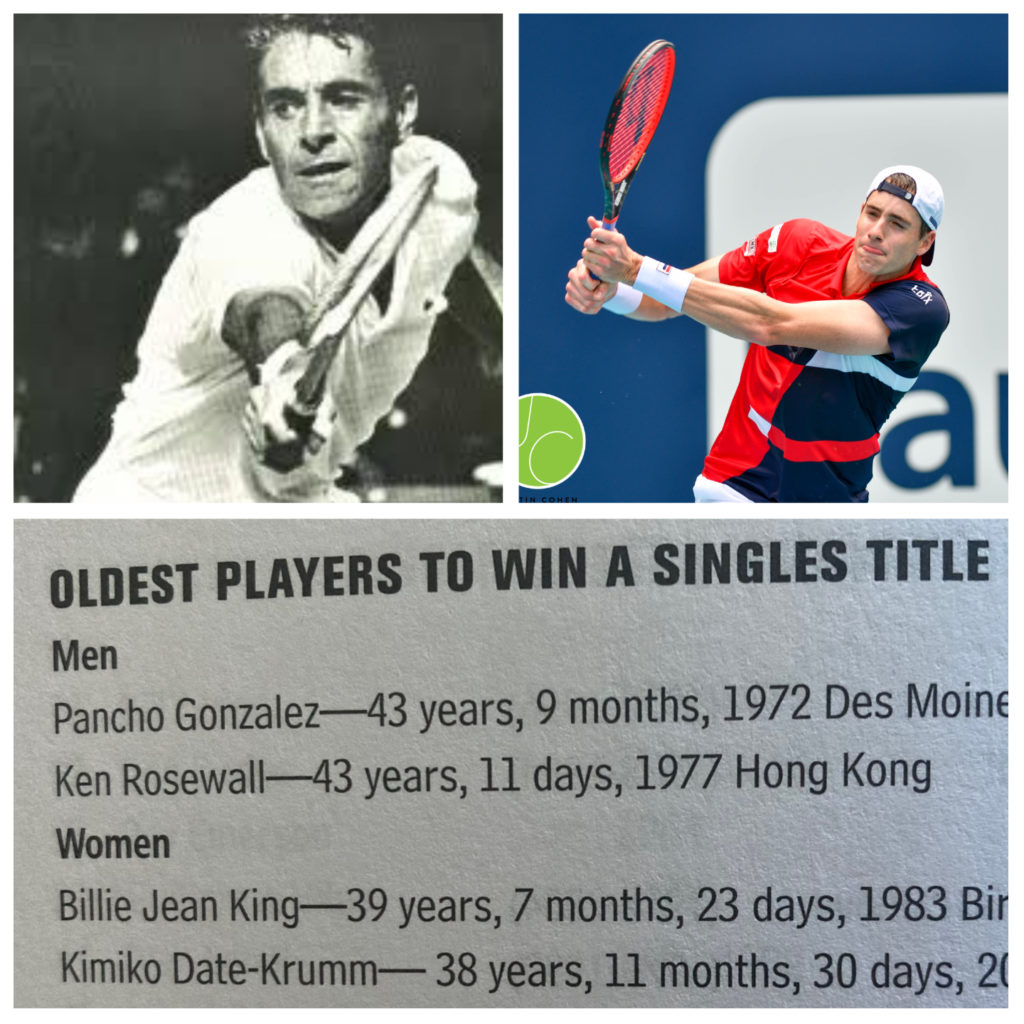By Randy Walker
@TennisPublisher
Is this the tennis equivalent of an archeologist finding a new pharaoh’s tomb in Egypt?
A new slice of tennis history was uncovered after John Isner advanced into the final of the 2023 Dallas Open.
Often when there is some sort of quirky bit of tennis history happening or about to happen in men’s tennis, I’m texting and emailing with Greg Sharko, the ATP Tour’s communications professional and all-around men’s tennis stat and record guru. I texted Sharko to confirm that if Isner, at the age of 37 years, 10 months, were to win the Dallas Open, he would be the second oldest player to win an ATP Tour event since 1990. Roger Federer won his 103rd and final singles title at his hometown Swiss Indoors in 2019 at the age of 38 years, two months.
“That’s right,” texted Sharko. “He might be the oldest American winner since Jimbo too” referencing the 1989 title won by Jimmy Connors in Tel Aviv, Israel at the age of 37 years, two months.
From being the editor and publisher for the Bud Collins History of Tennis, a being a tennis historian myself, I was well aware of the well-documented record that Pancho Gonzales holds as the oldest man to win a tour-level singles title in (of all places) Des Moines, Iowa in 1972.
Sharko then texted me “Check out our ATP Media Info tweet” which I went to and read with great interest: “#DALOpen finalist @JohnIsner, 37, is the oldest American men’s finalist of tour-level since Pancho Gonzales, 44, won 1972 Kingston title…”
Being well aware of the Pancho Gonzales history in Des Moines, I was surprised to read of this Kingston, Jamaica title and needed to suss out how the ATP came up with this stat.
“Pancho’s last title was in Des Moines, Iowa” I texted Sharko back.
Then I went to the ATP Tour website and checked the player activity for Gonzales (which you can do for all the retired players of the men’s game, unlike the WTA Tour’s website for the women) and discovered the activity for this event in Kingston, Jamaica, which was played in December of 1972. The Des Moines event was played much earlier that year, in February.
“Oh wow…it says that event was in December of 1972 in Kingston” I texted. “Bud and others always had listed Des Moines as his last title and recognized this as the oldest winner ever on tour level…We should do some digging…”
Since this 1972 event pre-dated the start of the ATP Rankings (which started in August of 1973), you could not delineate whether the event was a “real” event or not based on whether it awarded ranking points or not.
Sharko then texted me back and said that his colleague Josh Rey entered the draws and activity into their system and that Pancho still has the record, but just at a different event. He suggested I reach out to Rey to get more info.
I fired off an email to Rey and asked him if he had more info on how this Kingston event had suddenly appeared. I wrote, “Obviously, tennis was pretty lousy goosey in the early 1970s so it’s possible that this fell through the cracks or wasn’t recognized as an event since it happened so late in the year, but it was a legit field and even though it seems it was only 16 players, his Des Moines win also featured only 16 players.”
In Kingston, en route to the title, Gonzales defeated, in succession, a Jamaican player named Audley Bell, 1967 U.S. semifinalist Gene Scott, the great Mexican player Joaquin Loyo-Mayo and 1968 Wimbledon semifinalist Clark Graebner in the final. By comparison, in the 16-player event in Des Moines, which was part of the U.S. Lawn Tennis Association (modern day USTA) circuit, Gonzales beat, in succession Jim Watson, Jim Osborne, Juan Gisbert and, in the final, Georges Goven.
Rey quickly emailed a response, “Over the last three years, the ATP added 300+ tour-level events from 1968-81 that were missing in our database, including 1972 Kingston. We worked with an incredible tennis researcher named Cristian Uguzzoni, had many calls including ATP staff from the 1970s, and consulted World Tennis, World of Tennis, International Tennis Weekly and newspaper clippings that Cristian provided.”
So there you have it. New tennis history was uncovered and confirmed. Now, it’s time to re-write the tennis history books.

